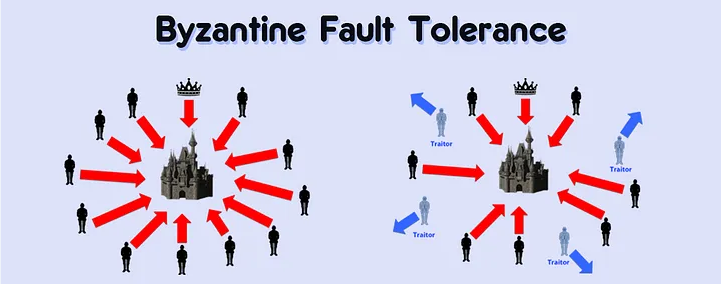The secret origin and decryption behind blockchain technology!
 summary:
The secret origin and decryption behind blockchain technology! Uncovering the true solutio...
summary:
The secret origin and decryption behind blockchain technology! Uncovering the true solutio... The secret origin and decryption behind blockchain technology! Uncovering the true solution to the Byzantine Problem
The Byzantine Problem: A Foundation of Blockchain Technology
The Byzantine Problem is a critical concept in the development of blockchain technology, with its origins tracing back to the military strategies of the ancient Byzantine Empire. During that era, the Byzantine Empire governed vast territories, and its armies were scattered across various regions. Communication between generals was indirect, relying solely on messengers to convey information. This situation posed significant challenges to internal coordination, especially during pivotal moments like deciding whether to launch an attack. Ensuring consensus among generals became a major issue. The presence of traitors or spies could disrupt decision-making and lead to catastrophic failures. This challenge is known as the Byzantine Generals Problem.
In such a scenario, ensuring that different army commanders reach a consensus despite the lack of trust became a core military strategy challenge. It wasn’t until modern times that technological breakthroughs began addressing this issue. In 1982, American computer scientist Leslie Lamport reframed the Byzantine Problem within the realm of computer science, proposing a theoretical framework for achieving consensus in distributed systems under conditions of distrust. His research focused on maintaining system functionality even when some nodes were compromised.
Lamport’s work significantly advanced the field of distributed systems, introducing a fault-tolerant model that ensures information consistency and system stability in environments where trust is not guaranteed. This theoretical foundation became a cornerstone of blockchain technology, particularly for decentralized blockchain networks where maintaining consistency and achieving consensus among nodes is critical.
The Byzantine Problem in Blockchain Technology
The rise of blockchain technology, particularly with the creation of Bitcoin in 2008, brought practical applications of the Byzantine Problem into focus. Bitcoin’s blockchain is designed using a decentralized consensus model inspired by Lamport’s work. In blockchain systems, data is distributed across nodes worldwide, with each node maintaining a complete copy of the ledger. This ensures that even if some nodes fail or come under attack, the blockchain remains operational and maintains data consistency.
This capability to solve the Byzantine Problem enables blockchain technology to offer innovative solutions across various fields such as finance, logistics, and supply chain management. The consensus mechanism is a key method for addressing the Byzantine Problem. Bitcoin employs the Proof of Work (PoW) consensus mechanism, which requires nodes to solve complex mathematical problems to earn the right to record transactions. This process ensures consensus across all nodes in the blockchain network. Other blockchain projects utilize alternative consensus mechanisms, such as Proof of Stake (PoS) and Delegated Proof of Stake (DPoS), each providing varying degrees of efficiency and security in resolving the Byzantine Problem.
Evolving Solutions and Broader Applications
As blockchain technology continues to develop, solutions to the Byzantine Problem have evolved. From early single consensus mechanisms to modern multi-layered approaches, advancements in blockchain technology offer more flexible and efficient methods for addressing consistency in distributed systems. These improvements have driven innovation not only in the financial sector but also in other industries, including smart contracts, supply chain management, and healthcare.
Blockchain, as an innovative technology based on decentralization and distributed structures, excels at achieving consensus in untrusted environments. By addressing the Byzantine Problem, blockchain has brought transformative changes to finance and provided groundbreaking solutions for industries requiring decentralized collaboration. This evolution has elevated blockchain from merely serving as the infrastructure for virtual currencies to becoming a technology with vast applications, reshaping our understanding of trust, collaboration, and data processing.
Tags: Byzantine Problem, Blockchain, Distributed Systems, Consensus Mechanism, Bitcoin

